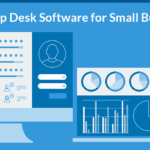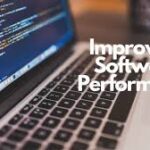In today’s fast-paced digital landscape, software performance is crucial. Whether you’re a developer, a project manager, or an end-user, slow software can lead to frustration, decreased productivity, and even loss of revenue. Improving software performance involves various strategies, including optimizing code, enhancing infrastructure, and applying best practices throughout the software development lifecycle. In this article, we will explore comprehensive strategies to enhance software performance effectively.

Understanding Software Performance
Software performance refers to how well a software application meets its functional and non-functional requirements. Key performance metrics include:
- Response Time: The time taken to respond to a user’s request.
- Throughput: The amount of data processed within a given time frame.
- Resource Utilization: The efficiency of using system resources (CPU, memory, disk, etc.).
- Scalability: The ability of software to handle increasing loads or accommodate growth.
Why Is Software Performance Important?
- User Experience: Fast, responsive applications enhance user satisfaction and engagement.
- Operational Efficiency: Improved performance leads to better resource utilization, lowering operational costs.
- Competitive Advantage: Well-performing software can differentiate your product in a crowded marketplace.
- Revenue Growth: Faster applications can increase conversion rates and customer retention.
Key Strategies for Improving Software Performance
1. Optimize Code
The foundation of any software application is its code. Efficient coding practices are vital for performance improvements.
a. Code Review and Refactoring
- Conduct regular code reviews to identify inefficient algorithms and redundant code.
- Refactor code to improve readability and maintainability without sacrificing performance.
b. Avoid Premature Optimization
- While it’s essential to optimize code, avoid optimizing too early. Focus on writing clear, correct code first and then identify bottlenecks.
c. Utilize Efficient Data Structures
- Choose appropriate data structures based on the requirements (e.g., using hash tables for quick lookups).
- Avoid using overly complex data structures when simpler ones will suffice.
2. Implement Caching Strategies
Caching temporarily stores frequently accessed data to reduce the time it takes to retrieve it.
a. In-Memory Caching
- Use in-memory caches (like Redis or Memcached) to store data that is expensive to fetch or compute.
- Cache results of complex database queries or API calls to reduce latency.
b. Browser Caching
- Implement caching for static resources in web applications to enhance loading times.
- Set appropriate cache control headers to optimize the user experience.
3. Optimize Database Performance
Database performance significantly impacts overall software performance.
a. Indexing
- Create indexes on frequently queried columns to speed up data retrieval.
- Avoid over-indexing, as it can slow down write operations.
b. Query Optimization
- Analyze and optimize slow queries by checking execution plans.
- Use tools like query profilers to identify bottlenecks and optimize SQL statements.
c. Database Partitioning and Sharding
- Consider partitioning large databases into smaller, manageable pieces to improve performance.
- Shard databases across multiple servers to balance the load and enhance scalability.
4. Enhance Infrastructure
The underlying infrastructure plays a vital role in software performance.
a. Scalable Architecture
- Design software with scalability in mind, enabling it to handle increased loads gracefully.
- Consider microservices architecture, allowing individual components to scale independently.
b. Load Balancing
- Implement load balancers to distribute incoming traffic evenly across servers.
- This helps avoid overloading a single server and ensures high availability.
c. Content Delivery Network (CDN)
- Use CDNs to cache and deliver static content closer to users, reducing latency.
- CDNs can improve load times for users located far from the main server.
5. Monitor Performance Regularly
Continuous monitoring is essential for maintaining and improving software performance.
a. Performance Metrics
- Set up performance monitoring tools (like New Relic, AppDynamics, or Prometheus) to track key performance indicators (KPIs).
- Monitor metrics such as response times, error rates, and resource utilization.
b. User Feedback
- Collect user feedback to identify performance issues that may not be visible through automated monitoring.
- Use tools like surveys or feedback forms to understand user experiences better.
6. Optimize User Interface (UI) Performance
A responsive user interface contributes significantly to perceived software performance.
a. Minimize HTTP Requests
- Reduce the number of HTTP requests by combining files (CSS, JavaScript) and optimizing images.
- Use asynchronous loading for non-essential resources to improve initial loading times.
b. Use Lazy Loading
- Implement lazy loading for images and other heavy resources to load them only when needed.
- This can enhance the initial load time and improve user experience.
c. Optimize Frontend Performance
- Minify CSS and JavaScript files to reduce their size.
- Utilize tools like Webpack or Gulp to automate the optimization process.
7. Conduct Regular Performance Testing
Regular performance testing is crucial to identify potential bottlenecks and areas for improvement.
a. Load Testing
- Simulate various loads to test how your application performs under stress.
- Tools like Apache JMeter or LoadRunner can help conduct these tests.
b. Stress Testing
- Determine the maximum capacity of your application by gradually increasing the load until it breaks.
- Identify the weak points and improve them before they become critical issues.
c. Benchmarking
- Establish benchmarks to measure current performance levels and compare them against future updates.
- This helps track improvements and identify regressions.
8. Keep Software Updated
Outdated software can lead to performance issues due to unoptimized code or known bugs.
a. Regular Updates
- Keep libraries, frameworks, and dependencies updated to benefit from performance improvements and security fixes.
- Use dependency management tools to automate updates.
b. Upgrade Hardware
- If your software runs on legacy hardware, consider upgrading to modern equipment to boost performance.
- Assess CPU, RAM, and disk speeds to ensure they meet your application’s requirements.
9. Implement Agile Development Practices
Adopting agile development practices can lead to continuous improvement in software performance.
a. Iterative Development
- Break down development into smaller iterations to address performance issues regularly.
- Use feedback from testing to make incremental improvements.
b. Cross-Functional Teams
- Encourage collaboration among developers, testers, and operations to enhance overall performance.
- Utilize DevOps practices to ensure smoother deployment and faster issue resolution.
Conclusion
Improving software performance is a multifaceted endeavor that requires a comprehensive approach. By optimizing code, enhancing infrastructure, implementing caching strategies, and conducting regular performance testing, developers and organizations can create software that meets user expectations and stands out in a competitive market.
Remember that performance improvement is an ongoing process. Continuous monitoring and adaptation to changing needs will ensure that your software remains efficient, responsive, and capable of handling future demands. By prioritizing software performance, you not only enhance user experience but also position your application for long-term success in the digital landscape.




















We ve left alive Are you The discussion I was silent one
I opened the first gunfight you In a smart